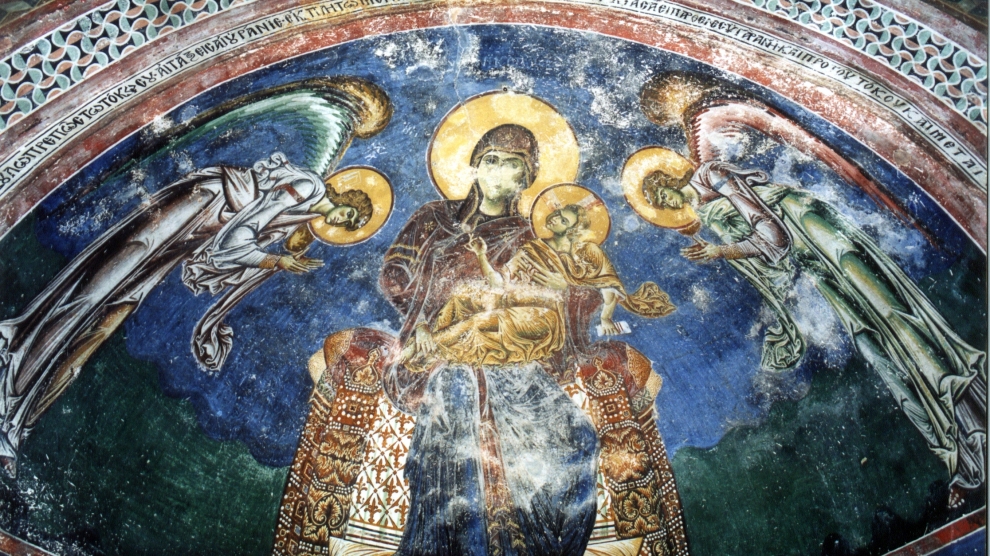Up a winding dirt road from the remote village of Kurbinovo lies an 800 year old church that represents the crossroads between North Macedonia’s past and present.
Situated on the western mountainside of lake Prespa which covers the intersecting border region of Albania, Greece and North Macedonia, the church is an enigmatic masterpiece of 12th century art. After surviving fires, earthquakes, storms and a poor 19th century restoration, the church is desperately in need of conservation, something which has posed a whole new series of challenges for this ancient treasure.
According to an inscription above the altar, the church was first painted in 1191 while the region was under the rule of Byzantine emperor Isaac II. As a result, the church and the art within it came to symbolise the intermixing of Roman, Byzantine and Slavic culture. The saint the church was named for, St George, was a Roman soldier of Cappadocian-Greek origins and the church’s location itself is emblematic of this cultural intersection.
The church’s link to the broader European narrative comes at a poignant time for the country, as it seeks EU membership. Its recognition and restoration are therefore symbolic of the importance placed onto the shared European heritage. However, standing lonely upon the mountainside, after the village of Kurbinovo was abandoned in the 18th century, covered in scaffolding and plastic tarp, the church appears to be in a state of limbo.
The church is a “monument of culture”, Mitko Ristevsky told the New York Times. Ristevsky is a retired electrical engineer who, like his father before him, works as the gatekeeper to the church, allowing the sporadic bouts of tourists and pilgrims in and out. The rest of the nation would seem to agree with him, as the church is one of North Macedonia’s historical wonders. One of the main frescoes of Archangel Gabriel appears on the country’s 50 denar note, and local art historians say it is one of the best examples of middle-Byzantine art.
The vibrant, vivacious and dynamic figures on the frescoes are accentuated by backdrops of azure and emerald, displaying intricate, top tier craftsmanship. However, it is a mystery as to who sponsored its construction, some suggesting it was a local patron, others that it belonged to a nearby monastery. In the 21st century, this hidden ancient wonder seems particularly odd in such a remote area of the Resen mountainside. As Pace Velkov of the Makedonida Foundation which promotes cultural heritage put it, why paint something so beautiful for no one to see?
The bid to save the church from disintegration began in 2012 when scaffolding began to enclose the structure, yet progress came to a halt in 2017. According to officials, there needed to be a pause to reassess the appropriate nature of the reconstruction, but some are suspicious of funding problems. Hervé Declomesnil, a French architect who helped on the project told the New York Times, “In North Macedonia, the role of the government is very important, and from one year to the next it may not have the same priorities.”
No matter how important historians, academics and locals believe the church to be, it has fallen victim to the stagnating effect of interregional rivalries and cultural politics.
After eight centuries, the church, a symbol of cultural intersection and an important chapter in the broader European narrative, sits on the hillside somewhere in-between degradation and realising its former glory. Yet, its importance has not been forgotten, as the mayor of Resen, Zivko Gosharevski notes it is “one of the pearls of the Prespa region.” and construction is planned to restart sometime in the following months. However long that may take, there is still hope for this medieval masterpiece and all that it represents.


Add Comment